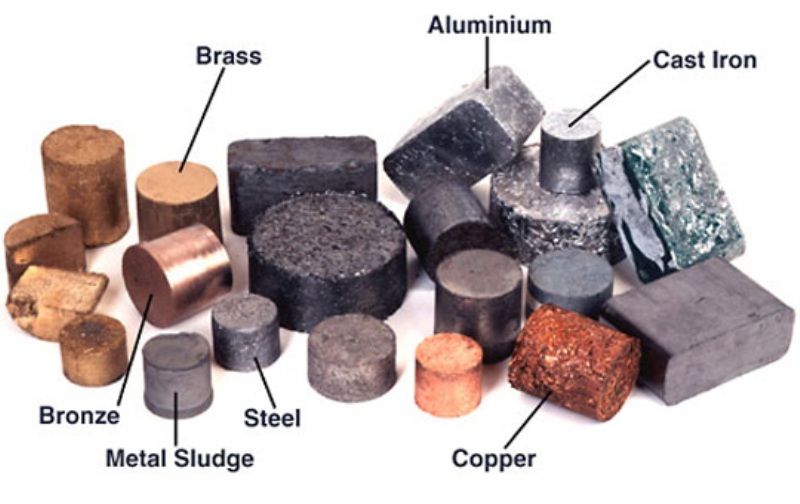METALS & ALLOYS TESTING @ BOMBAY TEST HOUSE PVT LTD
 Alloy material has very important role in our daily life even there won't be a day passed without using alloy. Our utensils in the kitchen, vehicles, computers, mobile phones, chairs etc. are using different type of alloys which means numerous alloys have been made and being used by human beings. Most of the engineering and medical equipment, machineries, tools are made by Alloys.
Alloy material has very important role in our daily life even there won't be a day passed without using alloy. Our utensils in the kitchen, vehicles, computers, mobile phones, chairs etc. are using different type of alloys which means numerous alloys have been made and being used by human beings. Most of the engineering and medical equipment, machineries, tools are made by Alloys.
WHAT IS ALLOY ?
 An alloy is a material containing a mixture of two or more metals. An alloy metal can be used to provide increased strength or a lighter weight material.
An alloy is a material containing a mixture of two or more metals. An alloy metal can be used to provide increased strength or a lighter weight material.
The common Metals and Alloys are ranging like
Metals are chemical elements that are typically solid, shiny, and conductive to heat and electricity. They are known for their strength, ductility, and ability to be hammered or shaped into various forms. Some common examples of metals include iron, aluminium, copper, gold, and silver.
Alloys, on the other hand, are mixtures of two or more elements, including at least one metal. Alloys are created by combining metals with other elements or with each other to enhance their properties or create new characteristics. This is done by altering the crystal structure or introducing impurities in the metal lattice.
Alloys often exhibit improved strength, hardness, corrosion resistance, and other desirable properties compared to pure metals. They can be tailored to specific applications and are widely used in various industries, including manufacturing, construction, automotive, aerospace, and electronics.
Examples of alloys include:
- Steel: A combination of iron and carbon, with small amounts of other elements. Steel is one of the most widely used alloys, valued for its strength, durability, and versatility.
- Brass: An alloy of copper and zinc. Brass is known for its yellowish appearance, high malleability, and corrosion resistance. It is commonly used in musical instruments, plumbing fittings, and decorative applications.
- Bronze: An alloy of copper and tin, often with other elements added. Bronze is harder and more durable than pure copper and has been used for centuries in sculpture, coins, and various tools.
- Stainless Steel: A steel alloy with a high chromium content. Stainless steel is highly resistant to corrosion, making it suitable for applications that require both strength and excellent corrosion resistance, such as kitchen utensils and medical devices.
- Aluminium Alloy: Aluminium combined with other elements such as copper, magnesium, or zinc. Aluminium alloys are lightweight, corrosion-resistant, and have excellent strength-to-weight ratios, making them popular in industries like aerospace and automotive manufacturing.
These are just a few examples of metals and alloys. There are numerous other alloys with different compositions and properties, each tailored for specific applications and industries.
TESTING PROTOCOL METALS & ALLOYS :
The testing protocol for metals and alloys involves a variety of techniques to evaluate their mechanical, physical, and chemical properties. Here are some key aspects of the testing protocol for metals and alloys:
- Iron Ore: Iron ores are rocks and minerals from which metallic iron can be extracted. They are used as the primary source of iron for steel production. Common types of iron ore include hematite, magnetite, and taconite.
- Composition Analysis: The first step is to determine the elemental composition of the metal or alloy. Techniques such as X-ray fluorescence (XRF), atomic absorption spectroscopy (AAS), or inductively coupled plasma (ICP) analysis are commonly used to quantify the concentrations of different elements present.
- Mechanical Testing: Mechanical tests are performed to assess the strength, hardness, ductility, and other mechanical properties of the metal or alloy. Common mechanical tests include tensile testing, hardness testing (e.g., Brinell, Rockwell, or Vickers), impact testing, and fatigue testing.
- Microstructural Analysis: Microstructural analysis helps evaluate the internal structure of the metal or alloy. Techniques such as optical microscopy, scanning electron microscopy (SEM), or transmission electron microscopy (TEM) are used to examine the grain structure, phases present, and the distribution of defects or inclusions.
- Heat Treatment Evaluation: If the metal or alloy has undergone heat treatment, additional tests are conducted to assess the effects of the heat treatment process. These tests can include hardness measurements, microstructural analysis, and impact or tensile testing of the heat-treated material.
- Corrosion Testing: Corrosion testing is performed to evaluate the resistance of metals and alloys to corrosion in different environments. Techniques such as salt spray testing, electrochemical methods (e.g., potentiodynamic polarization), or immersion testing can be employed to simulate and assess corrosion behaviour.
- Chemical Analysis: Chemical analysis is conducted to determine the presence of impurities or trace elements that may affect the properties or suitability of the metal or alloy for specific applications. This can involve techniques such as wet chemical analysis, spectroscopy, or elemental analysis.
- Non-Destructive Testing (NDT): Non-destructive testing techniques are employed to assess the integrity and quality of the metal or alloy without causing damage. Common NDT methods include ultrasonic testing, radiographic testing, magnetic particle testing, and dye penetrant testing.
- Compliance with Standards: The testing of metals and alloys is often performed according to specific standards or specifications, such as those set by organizations like ASTM International or ISO. Compliance with these standards ensures consistency, quality control, and comparability of test results.
It is important to note that the specific testing methods and protocols may vary depending on the type of metal or alloy being analysed, the intended application, and industry-specific requirements.
The common Metals and Alloys are ranging like
- Iron
- Steel and Ferro-alloys
- Special Steel
- Special Steel
- Copper & its alloys
- Aluminimum and its alloys
- Tin and tin alloys
- Zinc and Zinc alloys
- Lead and Lead alloys
- Magnesium and Magnesium alloys
- Nickel
- Chromium
- Cobalt and their alloys
- Titanium and titanium alloys
- Tungsten and its alloys
- Precious metals etc.,
| Purity | Specific Gravity | Bulk Density | Silica |
| Loss on ignition | Heavy Metals | Moisture | Ash/ Acid insoluble ash |
| Available Lime | Alumina | Iron | Sodium |
| Potassium | Sieve Analysis | Manganese | Oil Absorption |
| Copper | Sulphate | Phosphate | Chloride |
| Iron | Calcium Sulphate | Tin | Lead |
| Nickel | Acid insoluble matter | Metallic iron | Water soluble matter |

Testing
Read More
Inspection
Read More
Certification
Read MoreTesting Services
- Drugs & Pharmaceutical Testing
- Cosmetics & Essential Oils Testing
- Medical Devices Testing
- Ayush - Ayurvedic Drug Testing
- Food Products Testing
- Agri Commodities Testing
- Fertilizers and Soil Testing
- Animal Food & Feed Testing
- Water - Drinking Water & Effluent Water Testing
- Industrial Oils and Lubricants & Petroleum Products Testing
- Coal & Coke and Solid Fuels Testing
- Ores & Minerals Testing
- Metals & Alloys Testing
- Plastics, Polymer, Rubber & Rubber Products Testing
- Resins & Adhesives Testing
- Paints, Varnish, Pigments & Surface Coating Testing
- Glass & Ink, Paper & Pulp Testing
- Industrial & Fine Chemicals Testing
- Dyes, Acids and Solvents Testing
- Soaps, Detergents & Toiletries Testing
- Packaging & Packaging Products Testing
- Gold & Silver Assaying & Hallmarking
- Cement, Concrete & Building Materials Testing
- Pollution and Environmental Studies
- Microbiological Assays. Etc.,









